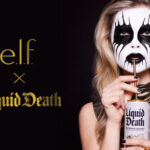A guest blog by Pamela N. Danziger, author of Meet the HENRYs: The Millennials that Matter Most For Luxury Brands
The luxury market is undergoing a radical transformation. The traditional pillars of marketing luxury brands around status and exclusivity have given way to new ideas of personal self-expression and inclusion. This calls on luxury brands to understand the new motivations of luxury consumers, particularly the next-generation affluents, on which their future depends.
Evolving ideas of luxury
Back in 2002 luxury consumers had an overpowering conspicuous-consumption drive which came to an abrupt end with the recession. In 2007 resourcefulness, simplification and comparison shopping became primary.
Then in 2012 as the economy got stronger, luxury consumers’ mood turned from saving money toward getting the most value out of the purchases they made. The search was on for how to spend money on the best stuff. It became a drive for quality, craftsmanship, and service provided by a brand to justify the price that they would spend. The old idea of ‘How do I buy more houses and fill them with more stuff?’, gave way to ‘How do I buy the best stuff I possibly can?’
Fast forward to 2018 and 2019 and this mindset has continued to evolve beyond just a search for quality, craftsmanship, and service to looking for purchases that give more meaning. Luxury consumers want brands that serve a higher purpose, that reinforce and mirror their personal values.
Millennials, in particular, the upwardly mobile HENRYs (high-earners-not-rich-yet) consumers with incomes from $100k-$250k, are the movers and shakers propelling forward this new definition of luxury as they abandoned the old ideas on which traditional luxury marketing and branding was based.
A search for deeper meaning
It is a shift toward “Goodness-based spending,” where luxury brands must serve a higher purpose than simply being of excellent quality and craftsmanship. New luxury brands must express values in line with consumers’ personal values.
Millennial HENRYs are on a search for deeper meaning, beyond simply having and owning expensive things.
HENRYs are looking for brands with a higher purpose. They hold most dear brands that express the values of honesty, being relatable, committed to doing the right thing They demand that brands share their personal values and follow sustainable practices.
For young HENRYs, their relationship with brands has become very personal. They want to engage with brands that are a mirror of themselves and their personal values. Exceptional quality, craftsmanship, and service are simply table stakes. New luxury brands must connect at a deeper, more meaningful level.
How to be a brand HENRYs will love
The changes that HENRY millennials are bringing to the luxury market demand that brands redesign their luxury in a new style. Brands must reimagine, refit and align their luxury to these new ideas and perceptions of what luxury is and where it fits into their lifestyle now and in the future.
For young HENRYs, who will become the next generation of luxury consumers, the goal of making more money, getting promoted, or becoming a partner is all well and good, but the traditional accomplishments are not the only prize they are after. Rather, it’s the accomplishment of achieving a personal goal and digging deep to succeed at something truly remarkable, like completing an Ironman triathlon or doctoral dissertation.
These smart, accomplished young people know that just about anybody can make a lot of money if that is what one aims for. But HENRYs measure their success in ways more personally meaningful than just financial success. That’s why for many HENRYs luxury-brand watches have lost much of their status symbol cachet, since owning one mainly communicates financial status, i.e. how much money one makes and spends.
HENRYs are looking for brands that communicate something more meaningful than just their net worth.
For young HENRY affluents, there is a distinct generational component to their chosen status symbols. They reject their parent’s or grandparent’s status symbols, in favor of symbols that communicate to their peers which ‘tribe’ they belong.
So HENRYs’ status symbols are less about traditional high-end luxury brands and more about brands that really express one’s values and identity. Think a Mini Cooper, rather than a Mercedes; or a Filson messenger bag, rather than one by Louis Vuitton; or a Shinola Runwell watch, instead of a Rolex.
Getting to the “why” of the brand is where the future of the luxury market will be built
That said, the TAG Heuer watch brand, after an unsuccessful attempt by corporate parent LVMH to move the brand upmarket to compete in the luxury price range of $5,000-$10,000, has recently reversed course, and brought the core of the product line back to a more affordable $1,000-$5,000 price point with new positioning aimed at the spirit and mindset of the HENRYs.
Even at $2,000, a TAG Heuer watch is still quite luxurious, but the new branding tagline, “Don’t Crack Under Pressure,” and its alignment with youth-skewing celebrity icons, like Super-Bowl champ Tom Brady, supermodel Cara Delevingne, and tennis star Maria Sharapova, are intended to resonate with HENRYs. TAG Heuer also recognizes that today’s HENRY women, as well as men, appreciate the high-performance promise that is a foundation of the brand.
In looking to the brand’s future, it has just introduced the Connected smartwatch to compete with Apple, priced at a very competitive $1,500, designed and built with Intel and Google under the Android Wear operating system. Yet at the same time, TAG hasn’t abandoned its legendary past and continues to offer its classic Steve McQueen line to honor of a man who having never grown old, remains an icon for young HENRYs.
Getting to the “why” of the brand is where the future of the luxury market will be built. New branding strategies are what’s needed, not just creative programming or digital-marketing tactics. It is all about tailoring the brand message to the unique psychology of younger consumers on the road to affluence.
Tell new stories of luxury
Today, luxury brands telling old stories of exclusivity, status, indulgence, and over-the-top extravagance repel more than they attract. New narratives are required that maintain the elevation of the brand above the masses, yet connect with the unique consumer psychology of the next-generation luxury customer, which is democratic, not elitist.
Those new luxury stories that will resonate with the zeitgeist of today’s young HENRYs and the next luxury generation include many thematic narratives. Here are some of the new stories of luxury that will connect with HENRYs:
- Luxury of Performance — Luxury can’t just exist as a product concept anymore, it has to deliver an experience that is meaningful to young HENRYs. It has to perform. Brands have to deliver some meaningful, measurable value to the HENRY customer. Performance and function is a key differentiator. The performance takes brands out of the realm of simply being to actually doing something important for the customer. Performance luxury is exemplified by brands like Canada Goose, a brand that has been around more than 50 years as the ‘performance’ brand for lumberjacks and polar adventurers. But Canada Goose shed its macho image on the cover of Sports Illustrated with supermodel Kate Upton wearing little more than a $595 Chilliwack Bomber jacket on a ship in Antarctic waters.
- Luxury of Simplicity – Personal care and beauty brand Kiehl’s sells simplicity itself – simple product, simple ingredients, simple packaging – and extraordinary results. Its prominent “since 1851” heritage says a brand that has been around that long must be doing it right. Kiehl’s simplifies its packaging and presentation elegantly. Simplicity is hard to do, but beautiful to behold when it is achieved. “Less is more” becomes the guide to creating simple, elegant brands and brand stories.
- Anti-Status Luxury – As a brand, Jeep defines its promise as “Vehicles enabling life’s extraordinary journeys.” It explains its goal to: “Provide vehicles that support a lifestyle of boundless freedom, responsible adventure, and are reliable, safe, fun and environmentally friendly.” Jeep is an experiential brand that most especially promises to take its owners outdoors, as well as to the grocery store or mall.
Not about the How, but the Why
In a recent talk at the Hackers on the Runway conference in Paris organized by TheFamily, marketer-extraordinaire Seth Godin asked: “Is Digital the End of Luxury Brands?” Rather, the question should be “Is the Digital Generation, i.e. young HENRYs, the End of Luxury Brands?”
The key challenge for luxury brands with the young HENRYs is not about how they connect – internet marketing tactics – but how to create new and compelling reasons why their brands are meaningful and important to this digitally-empowered generation.
Check out Pam’s new book called Meet the HENRYs: The Millennials that Matter Most For Luxury Brands. To connect with Pam, check out her website.
You can set up a time to chat with me about your marketing challenges using my calendar. Email me jeffslater@themarketingsage.com Call me. 919 720 0995. The conversation is free, and we can explore if working together makes sense. Try my new chat feature on my site if you have a quick question.
Photo courtesy of pexels.




